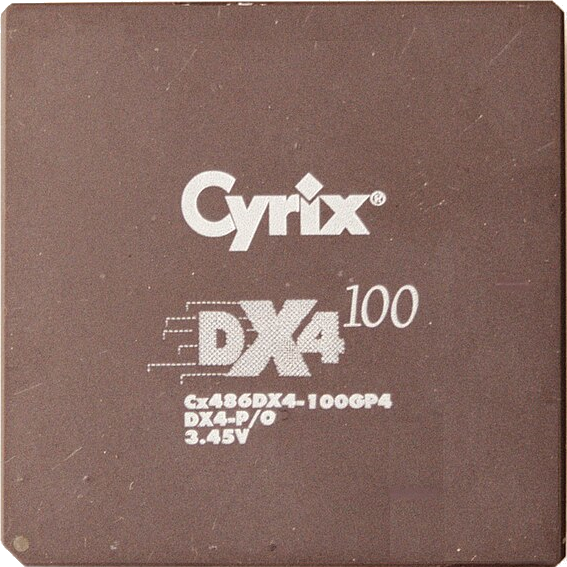- 2 Posts
- 76 Comments
I like Miniflux.

 4·20 days ago
4·20 days agoThe at load efficency isn’t always the most important metric, depending on what you are using the machines for. If they are mostly idle, efficiency isn’t too bad. Many server tasks don’t load the CPU to the fullest anyway.

 5·20 days ago
5·20 days agoThey are not too terrible really. 3rd gen i7 is the Ivy Bridge generation, so 22 nm. For many homelab server tasks the CPUs would be just fine. Power efficiency is of course worse than modern CPUs, but way better than the previous 32 nm Sandybridge generation. I had such a system with integrated graphics and one SSD and that drew 15 W at idle at the wall.

 6·22 days ago
6·22 days agoPi Zero uses the CPU from the 3
No, the original Pi Zero uses the CPU of the Pi1 (only clocked higher). So it is quite a bit slower than a Pi 2, since it has only a single ARMv6 CPU core. Still fine for a DNS server on a typical home network.

 7·28 days ago
7·28 days agoIt won’t get wikis or issues though.
You can easily mirror Github wikis as well. You just need to add
.wiki.gitto the repo URL. That way you can clone the wiki just like any other Git repo.

 12·1 month ago
12·1 month agoThis is pretty neat. If this was a real museum, you’d have to do a lot of walking, that’s for sure!

 4·1 month ago
4·1 month agoYeah, Bonzi Buddy!

 241·1 month ago
241·1 month agoThere is also AMD and they are doing pretty well. I wouldn’t write off x86 just yet. But less competition is never a good thing, and Broadcom buying another company has never resulted in anything good, as far as I can tell. For anyone except Broadcom themselves.

 514·1 month ago
514·1 month agoIt is, but Signal and Matrix aren’t really all that similar. Matrix’s privacy is pretty atrocious. It stores tons of meta data about users all over the place. That’s the exact opposite of what Signal does.

 78·2 months ago
78·2 months agoUgh, Broadcom buying Intel would be terrible.

 1·2 months ago
1·2 months agoSure, if you have exactly one client that can access the server and you can ensure physical security of the actual network, I suppose it is fine. Still, those are some severe limitations and show how limited the ancient NFS protocol is, even in version 4.

 2·2 months ago
2·2 months agoYou need sampling at twice the frequency as a minimum to extract a time domain signal into the frequency domain. It says nothing about “perfect” especially when you’re listening in the time domain.
Yes it does. You can use a higher frequency, but that does not change anything except increase the maxiumum frequency possible. Even with perfect ears and the best equipment, there is no audible (and mathematical) difference to be had.
Everyone who claims otherwise should watch Monty’s explainer videos. I know they are quite old at this point, but everything he explains is still perfectly valid. If that does not convince you, nothing will.

 1·2 months ago
1·2 months agoIt turns out that dynamic range is limited by the audio sampling rate and the human ear can easily detect a far greater range CD audio supports.
Dynamic range isn’t limited by the sampling rate. It is limited by the resolution, which is 16 bits for the audio CD. With that resolution you get a dynamic range of 96 dB when not using any dithering and even more than that when using dithering. Even with “only” 96 dB that dynamic range is so vast, that there is no practical use of a higher resolution when it comes to playback. I know that the human ear is supposed to be able to handle 130 dB or even more of dynamic range. The thing is, you can only experience such a dynamic range once, afterwards you are deaf. So not much point in such a dynamic range there.
There are good reasons to use a higher resolution when recording and mixing audio, but for playback and storage of the finished audio 16 bits of resolution is just fine.

 9·2 months ago
9·2 months agoNFS is bulletproof.
For it to be bulletproof, it would help if it came with security built in. Kerberos is a complex mess.

 5·2 months ago
5·2 months agoIf someone compromises the host system you are in trouble.
Not only the host. You have to trust every client to behave, as @forbiddenlake already mentioned, NFS relies on IDs that clients can easily fake to pretend they are someone else. Without rolling out all the Kerberos stuff, there really is no security when it comes to NFS.

 2·2 months ago
2·2 months agoarchival strength USB NVME drive,
Does such a thing exist? Ordinary flash storage is pretty bad at keeping its content when powered off for a long time, due to how flash memory works. I’d be curious about such drives.

 3·2 months ago
3·2 months agoThanks, I think the risk here is that there may not be hardware to read it.
M-Disc DVDs are readable by ordinary DVD drives. So you could simply put a USB DVD drive alongside those backup M-Discs on the shelf.

 2·3 months ago
2·3 months agoThe script appears to be missing the
#!line. Without that, it is unclear which interpreter should be used for executing the script.
It’s on April 1st, but nobody takes it seriously.